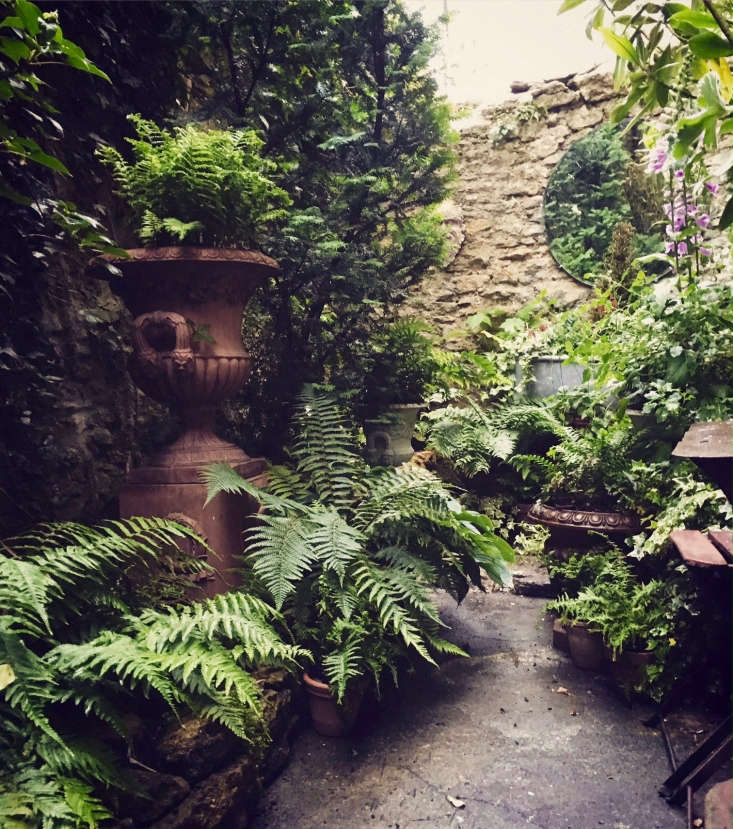For Jack Laver Brister of Tinhouse Home and Garden Antiques, a heavily shaded courtyard that came with the Georgian townhouse he’s renovating in Somerset, England presented a major gardening challenge. Yet despite tall walls and limited sunlight, he has created a leafy oasis that is crammed with thriving plants and clever tricks. We asked him to share his tips for gardening in heavy shade:
Photography courtesy of Jack Laver Brister via @Tradchap.

1. Don’t fight what you can’t change.
“When we bought the house, the shaded garden was one of our biggest concerns, but the 200-year-old lime pointed stone walls that create the shade are actually the biggest assets of the garden,” says Jack, who filled the space with ferns and other plants that thrive in shade.

2. Ferns are your friends.
“I’ve always loved ferns and as a child loved the idea of the Victorian ferneries,” says Jack, whose favorites include Dryopteris filix-mas ‘Linearis Polydactyla’ and Polystichum aculeatum and Dryopteris filix-mas, a common variety often found growing wild in hedge rows.
3. Add drama with architectural features.
Jack’s day job as an antiques dealer for his family’s business, Tinhouse Antiques, means that he can source wonderful old planters, including the towering cast iron urns on plinths that add height and formality. But, he insists, planters do not need to be expensive; the garden also has new galvanized cow troughs (sourced from agricultural suppliers) alongside Victorian terra cotta pots and weathered stone planters. Cheaper new stone pots will quickly gain a patina and blend into the mix.

4. Utilize every area in a small space.
To maximize space, use every available nook and cranny. A mirror is hung on the wall at the end of the garden to create more depth.

5. Create contrasting textures for visual interest.
A shady garden is always more green than flowers and Jack contrasts his abundant ferns with glossy magnolia, hostas, box, and Fatsia japonica. Interest is created with billowing bamboo that softens the edge of the wall and adds height and structure.

6. Use climbers for drama.
Although it’s still shrouded in greenery, Jack’s front door has a very different feel from his shady courtyard. The lush wisteria works beautifully with the lead porch and a fast growing shade-loving Cobaea scandens grows profusely around it. Symmetrical pots add to the grandeur of the doorway while scented salvias help to provide contrast.
For more of our favorite courtyard gardens, see: